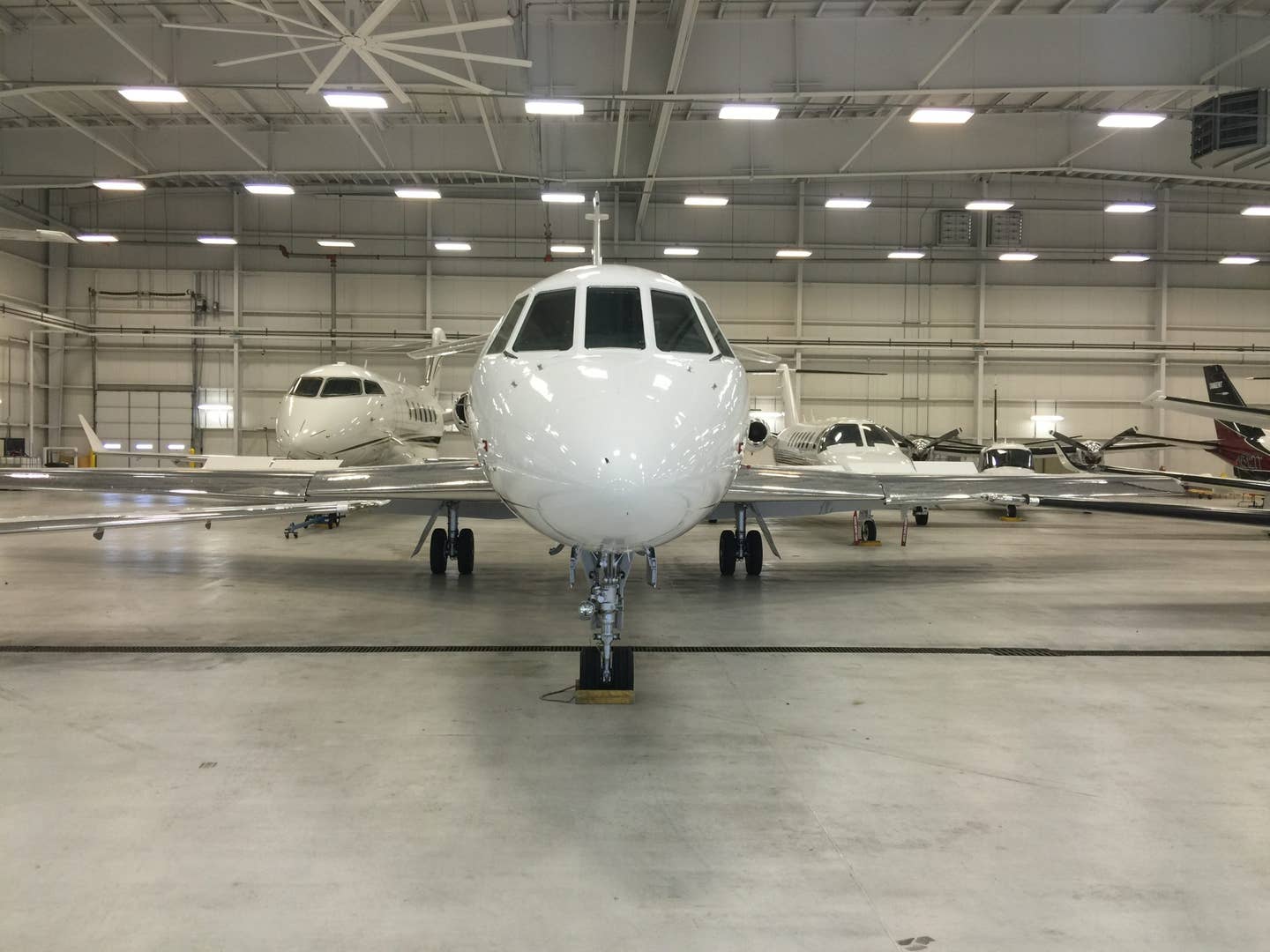Solving the Problem of Aircraft Stacking
Recently developed software application allows FBOs and others to place aircraft more efficiently.

HangarStack provides an accurate real-time inventory of aircraft in a hangar, as well as adjacent ramp areas. Courtesy: HangarStack
Like many industry-changing products, HangarStack was created when a team of professionals identified a problem and solved it. The problem in focus was how to reduce risk and cost while moving and stacking aircraft on ramps and hangars.
The solution arrived four years ago when the company’s co-founders, Mike Partin and Steve McNeilly, developed a purpose-built online software application that provides visual display of available and used hangar space.
How it Started
Years ago, Partin was the general manager of a large FBO in the Chicago area. His facility had five hangars, totaling 200,000 square feet, with dozens of aircraft movements occurring under his team’s watch each day.
“It was frustrating not knowing which aircraft were in the hangar,” Partin said. “We needed a real-time display of the hangar situation at any given time, as well as the aircraft we were expecting to arrive.”
Consequently, Partin and McNeilly sought a way to virtualize the antiquated paper printouts of rough-outlined hangars and crudely drawn, not-to-scale aircraft representations. The byproduct of their vision became the HangarStack online application.
How it Works
The product provides an accurate real-time inventory of aircraft in a hangar, as well as adjacent ramp areas. It happens through simulations with reduced-scale hangars and aircraft, which can be “towed” (i.e. dragged with a computer cursor) within the software in a way that replicates real-world towing movements.
For example, a small midwestern FBO must shelter all their customers’ aircraft prior to a quickly approaching summer storm. On the ramp there are two light jets, a small high-wing piston, a single-engine turboprop, and two biplanes. All need to fit within the available hangar space—with room available for an inbound midsize jet to be squeezed inside—before it hails.
Historically, the process would be to call upon institutional knowledge and manual math to determine the most efficient way to “stack” the aircraft inside. But relying on this antiquated method introduces human error and a litany of inefficiencies.
To this point, Partin provided his own anecdotes. These were collected from several brutal Chicagoland winters when he oversaw ground handling for all types of general and business aviation aircraft.
“Many line personnel have years of experience and can eyeball a hangar really well. But sometimes they get it wrong and cause problems,” he said. “And when it’s 20-below outside, it’s like playing Tetris on a bed of snow and ice with multimillion-dollar aircraft. That’s not a safe or accurate way to manage the ramp.”
Rather than rely wholly upon varied levels of skill and knowledge among personnel, HangarStack allows the same FBO team to plan aircraft movements more intentionally and efficiently. These professionals are able to select the make and model of each aircraft from an inventory of more than 500 pre-loaded options. Once selected, the dimensions (width, length, and height) of each one is automatically populated. Simultaneously, personnel can quickly run through placement combinations to determine the best option prior to moving physical assets.
With greater understanding of aircraft inventory and location, FBO management can better execute on their mission of assisting as many customers as possible. Naturally, this opportunity has another desirable byproduct: increased revenue. Fundamentally, HangarStack poses the following similar questions to hangar and ramp operators:
- Is your hangar making the most revenue it can?
- Are you leaving money behind?
“Every empty square foot of your hangar costs money and reduces margins,” Partin explained. “The FBO is a very lean-margin business, and you simply cannot afford any unused or unpaid space.
“That hangar only makes you money if it’s filled with paying aircraft.”
Partin said that the company doesn’t publish case studies, owing to customer confidentiality. But he suggests that many customers have seen 30 to 40 percent year-over-year increases in hangar utilization by incorporating the software into their organizational decision-making.
More Features
Added functionality created over the past several years have helped the software evolve to serve more than just FBOs, including:
- Hangar and property developers
- Architects
- Commercial and fractional operators
- Aerial firefighting organizations
One feature within this specially designed program is its ability to help operators determine how much to charge for each hangared airplane. It’s specific to each FBO, as they are privy to their internal hangar rate per square foot. HangarStack collects inputs from the business and calculates the charged fee for the specific aircraft. This is based upon the stored dimensions within the software for a particular airplane or helicopter.
This algorithm also helps interested parties to better understand additional theoretical scenarios, especially those that arise during the process of developing hangar space, like:
- What would potential revenue look like if we added 20,000 square feet?
- What if we created multiple smaller hangars rather than one big one?
- What would be the impact of demolishing our existing hangar and replacing it with a larger one?
In addition to the intrinsic benefit of helping customers capture more revenue, Partin noted that HangarStack helps them to be safer. Traditionally, the following are steps for best stacking aircraft.
- Have a plan.
- Use wing walkers.
- Never be too sure.
- Check your equipment.
- Communication is a must.
By providing personnel better visibility on inventory within their hangars and the ability to simulate movements prior to touching an airplane, safety is improved. Consequently, hangar rash incidents are also reduced.
“You are reducing the risk margin substantially by knowing where everything will go beforehand,” Partin said. “Hangar rash costs the industry tens of millions [of dollars] each year, not only in damages, but also loss of use of the aircraft. Not to mention it also destroys relationships and hurts the FBO in the long run.”

Subscribe to Our Newsletter
Get the latest FLYING stories delivered directly to your inbox






